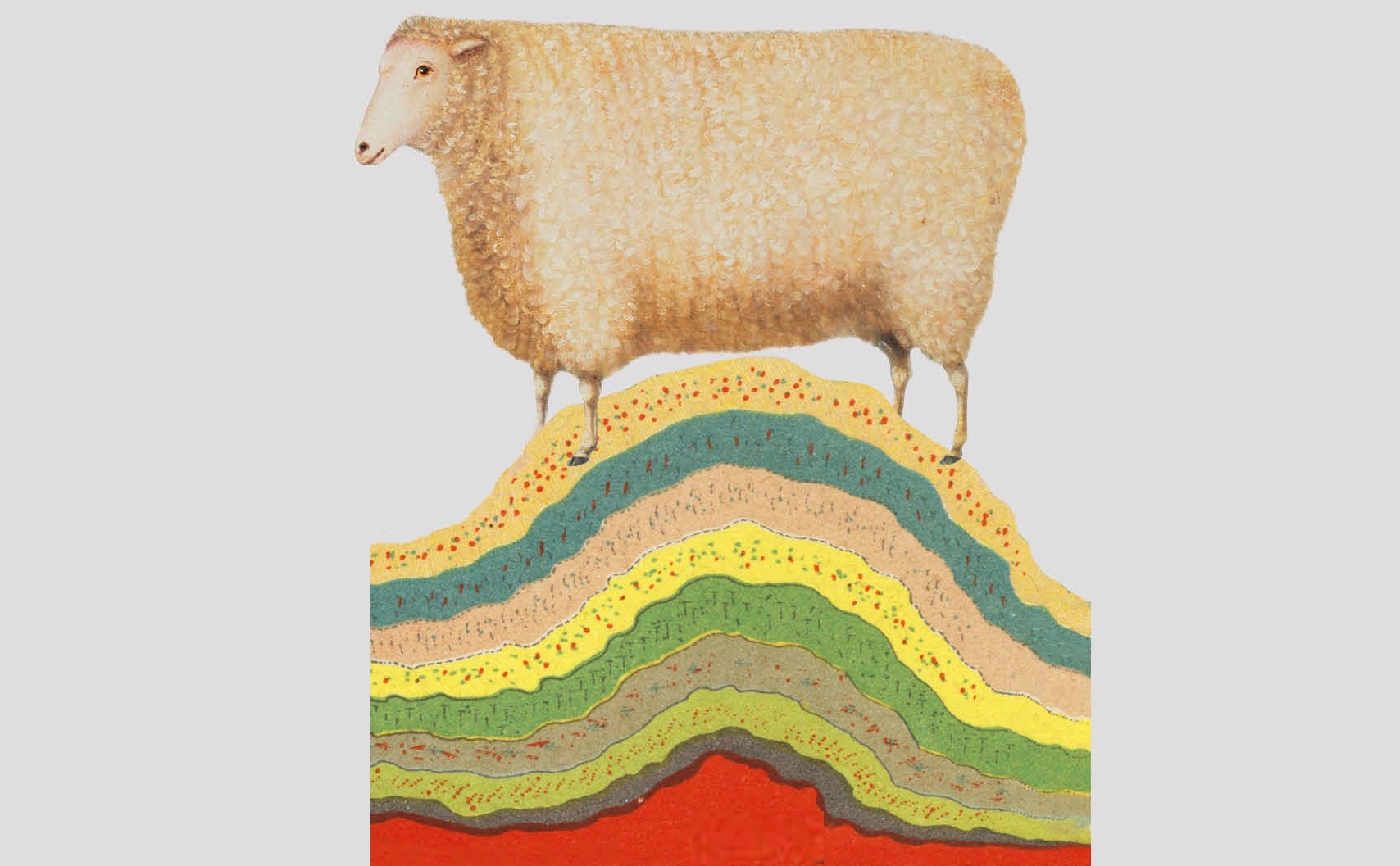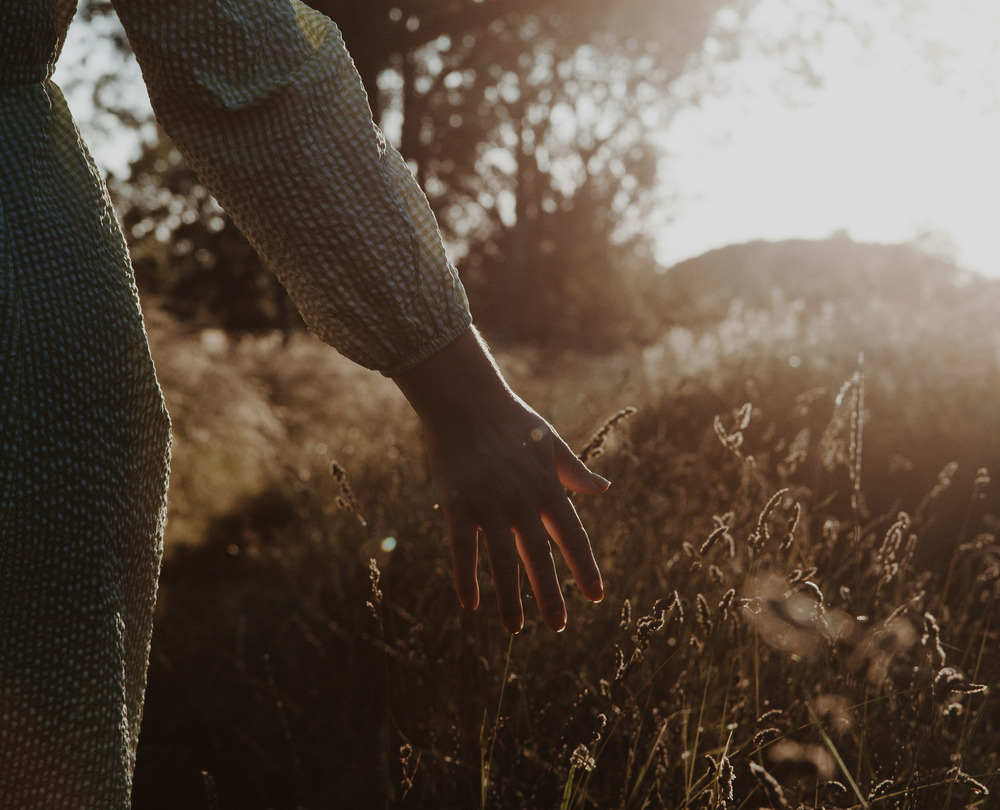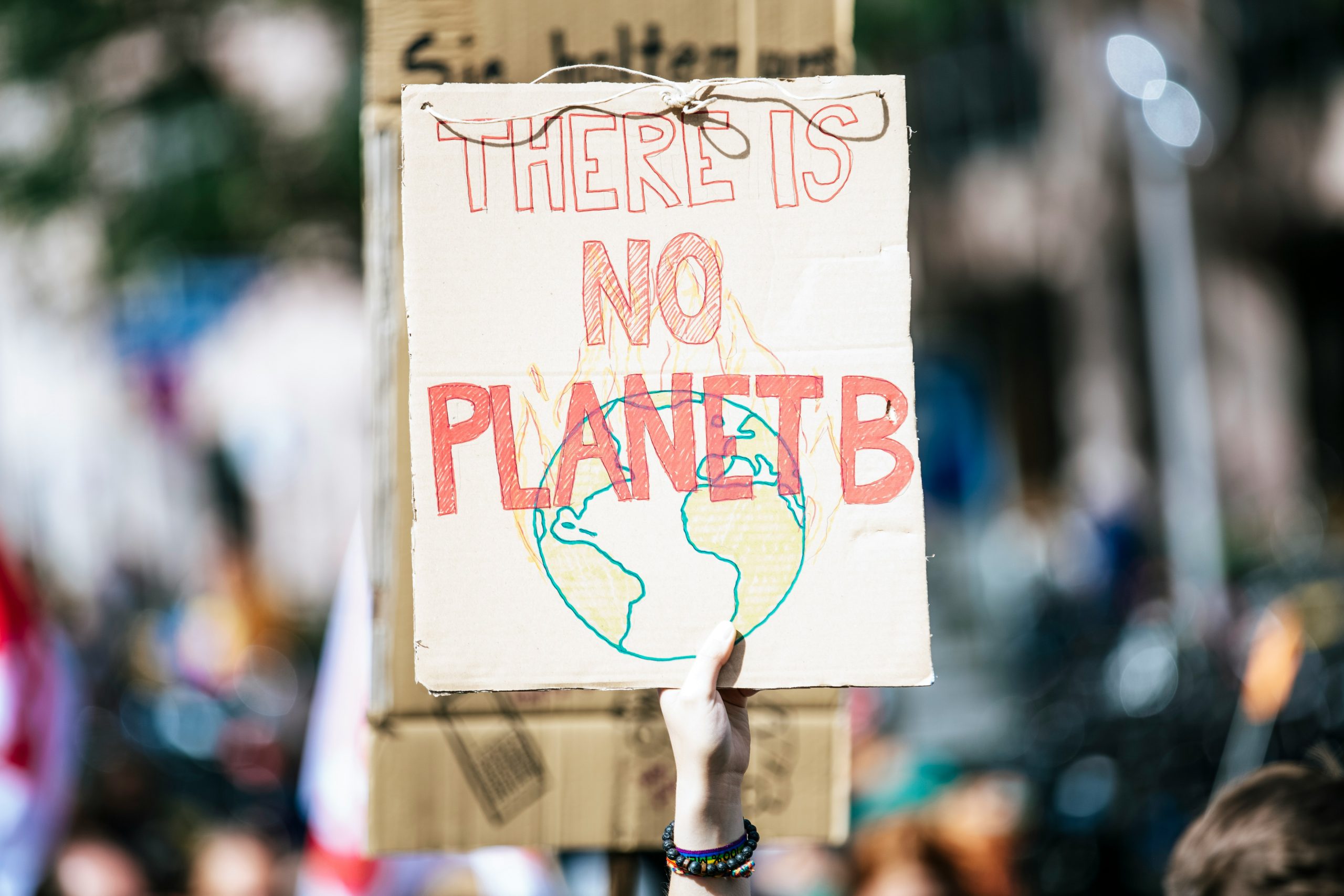Books & Culture
The Pandemic Completely Redefined My Relationship with Nature
I have a new understanding of what it means to be living, and worthy of protection

To weather the early days of the pandemic, I went back to my parents’ house in Southern California. I had lost both of my jobs and, after applying for unemployment, had nothing to do but wander through the neighborhood. In those days we didn’t know about the improbability of outdoor transmission, and many of my neighbors were afraid to go for a walk. So I was alone with the occasional coyote and, of course, the plants. It was spring. Many of us will remember this contrast: while death loomed over the human world, more-than-human life, as Robin Wall Kimmerer calls it, flourished with what seemed, from the outside, like ecstasy. The birds could not stop singing. The sage blossoming in the nature preserve behind my house donned its glossiest shade of green. Same with the statice: the deep, purple shade of artificial grape, it bloomed so vibrantly as to appear surreal. Even the sky shone a deeper and more confident blue. It was as if the plants had put on their Sunday best to say goodbye to us. And so while there was comfort in witnessing their celebration, there was also grief. The thriving of humans appeared mutually exclusive with the thriving of everyone else. The plants had never announced this so explicitly. What would happen when we returned to a pre-plague pace of life and consumption? The world would dim again.
While death loomed over the human world, more-than-human life flourished with what seemed, from the outside, like ecstasy.
I have always enjoyed being among plants. When I was in high school, my favorite time of day was walking my dog through the brown and amber hills behind our house, though then its perimeter was wider, the mustard and sage had space to stretch. Then, the hills for me were only a setting in which, alongside my black fluffy dog, I could forget the stress of standardized tests and the soccer team. But I felt no sense of belonging among the beings that surrounded me. In fact, any sense of belonging I had—in my city, in the United States, on Earth—felt precarious.
Irvine, the city I grew up in, operated on exclusionary and destructive values in managing the land and the people that lived there. Real estate development eternally encroached on our nature preserves, while housing discrimination or racism within the school system either kept Black and brown families from moving in, or forced them to move out and into more supportive, inclusive communities. Growing up in a multiracial, diasporic Black family, I felt keenly aware that we, like the ever-shrinking preserve, were unwanted in my city. We weren’t the image of progress, cleanliness, or sophistication that people wanted to see.
In the same way it took me years to value the vibrant love that my Nigerian extended family bestowed upon me—to remember with gratitude that my grandmother had carried me on her back, that my grandfather had killed a goat to say goodbye to our family the last time we visited—I came belatedly to appreciation of more-than-human life. It is difficult to value what you are taught has no value. It is difficult to treat as alive what you are taught to objectify. And so, although my dad has always spoken to the plants in our garden, it took living in lockdown to make me feel as though time spent in nature was not, in fact, time spent alone. In an abandoned rose garden I passed on my walk, I built a little ritual of rinsing my hands in the old fountain and greeting the wild oranges that hung above its spout.
It is difficult to value what you are taught has no value. It is difficult to treat as alive what you are taught to objectify.
The pandemic, too, amplified the looming sense of panic about climate change that, occasionally, over the years, has licked up like a flame: in the summer of 2019, I was living in Brazil when the Amazon caught fire. Even in my state in the south of the country, we could see black smoke fill the sky, funneling in from thousands of miles away. This was distressing. But the pandemic forced me to care much more loudly. I wanted to read about climate change, I wanted to see how I could shift my relationship to the natural world. I wanted to restore my relationship with the beings that restored me.
There were quite a few books, fiction and nonfiction, on my list, but only a few challenged me to think more critically about my relationship with nature as an actual relationship. The first worth noting here was Aimee Nezhukumatathil’s World of Wonders. I was convinced by Kiese Laymon’s recommendation that the volume “was about to shake the Earth.” I was also taken in by Fumi Nakamura’s artwork, reminiscent of the illustrations in children’s books. The collection had a soft, nostalgic aesthetic: Nezhukumatathil offers her childhood memories of the plants, animals, and insects that surrounded her as she moved frequently to different regions of the U.S. and visited relatives in Malaysia and India. It was the more-than-human world that kept her company through so much change, and each story is titled after a beloved creature.
While Nezhukumatathil treats the natural world with deep tenderness, and offers perfunctory accounts of her grief about the destruction of climate change, I felt she treated the beings she described with dissatisfying distance. The book’s cover itself offers an apt illustration of this: the title is centered on a white background, surrounded by vibrant drawings of foliage and wild animals. The sense I had while reading was that the narrator’s relationship to the natural world could be illustrated in the same way: that she stood within some safe enclosure observing nature, which she appreciates as a cherished possession, a work of art.
Nezhukumatathil aims to inspire in her readers wonder at the non-human world, and still, she does so by engaging with other species only as objects of her gaze. She closes the collection with an anecdote about how, teaching a college class one day, she discovered that the vast majority of her students had never seen a firefly and knew almost nothing about the species, even though they lived in a city where the insects proliferated. Sharing her sorrow at this fact, she asks, “What is lost when you grow up not knowing the names for different varieties of fireflies?” In response to her own question, she lists, in the book’s final paragraph, a series of memories that “a single firefly” can illuminate: “It might make me feel like I’m traveling again to a gathering of loved ones dining seaside on a Greek island,” she writes, or “send me back to my grandmother’s backyard to listen for whip-poor-wills.”
While, on the one hand, her affection for the fireflies is touching, on the other, the centrality of the human experience as an observer of a changing climate, rather than as instigator and, increasingly, a victim of it, feels outdated and a bit unsettling, a reminder of our dangerous fantasy that we exercise dominion over Earth and all its creatures. The real cost of environmental degradation in human lives is absent from World of Wonders. We are to “cherish” nature because of its beauty, and the main consequence of not doing so is that we will live in a less beautiful world.
By the time I was reading World of Wonders, it was fall of 2020. I couldn’t reconcile reading these strange essays written from this distanced perspective with my reality: smoke from local wildfires seeped through the cracks in my windowsill, I couldn’t go outside for weeks on end. Meanwhile the deadly virus loomed imperceptibly in the air we breathed. I had never felt less like an observer of the natural world in my life, had never felt more vulnerable to it. The pandemic made me feel like part of the world in the humblest possible way. At home with my aging parents, I was keenly aware of the need to protect myself and my family from the manifold threats the “environment” hurtled against us. This had never before felt necessary: growing up from a planned community, I had always felt safely (and prohibitively) insulated against threat, against danger: Irvine kept out “crime.” Irvine cops drove unhoused residents to shelters in nearby cities. Irvine residents called the cops on their Black neighbors for entering their own homes.
We are not on the other side of the glass case. We are touchable, penetrable, eatable, burnable.
Even marked as a threat to be protected against rather than a girl deserving of that protection, I had trusted that rhetoric. It conditioned me to believe I would always be safe, imbued me with an adolescent sense of invincibility—one that was completely at odds with my dad’s own immigrant sense of precarity. A future microbiologist growing up in Nigeria, he put his toothbrush in the refrigerator at the age of four to ward off germs. He had come to Irvine seeking the fulfillment of dreams, the protection against illness and suffering and poverty that the American state promised and propagandized. I took the security he and my mom had given me for granted; I rode motorcycles without a helmet and until last year ate anything that had fallen on the floor. I never felt my safety was truly at risk. Whatever the risk was, we had the technology to fight it. So many of us feel that way about the environment. But we are not protected. We are not on the other side of the glass case. We are touchable, penetrable, eatable, burnable.
I don’t mean to say that I expect all contemporary nature writing to speak directly to this vulnerability, or to address the full scope of climate change’s increasingly devastating impacts on humans. But the absence of real relation between the Nezhukumatathil’s narrator and “nature”—the fact that she never really seems situated within our changing environment, but rather securely outside of it, like an aquarium visitor standing on the right side of the glass separating her from a great white shark—feels indulgent, a train of magical thinking about our own position on the planet that we can no longer afford.
It is the same magical thinking that allowed me, too, to treat the nature in my neighborhood as aesthetic. As a teenager in the preserve, I hated how poorly protected it was: new houses sprouted up each year like mushrooms after a rain. When I longed for solitude, I would frame my eyes with my hands like a blinkered horse. I wanted to look at the land as I imagined it used to be: only amber sage and yellow mustard as far as the eye could see. Once, when I was doing just this, I walked straight into a cactus. The spike drove into my shin. What peace in pretending the world is for looking, that the world does not touch.
As a teenager in the preserve, I hated how poorly protected it was: new houses sprouted up each year like mushrooms after a rain.
Knowing that separation does not guarantee protection, I began to feel my life in Irvine was like a failed simulation. (Of what, I can’t be sure—probably the simulation of some ideal, an ideal of absolute newness, cleanliness, and orderliness.) So much of Irvine was designed to keep people out, humans and other species. The many privileges that the middle class secure at the expense of poor and working-class people manifest precisely as this separation, the real and imagined insulation against threat. While I recognize the extent to which I have benefitted from these policies and practices, the motivation to put in place boundaries that keep out so much of the world is what leads to the over-consumption and violence that creates greater environmental and human harm. And so, another interpretation of my blinkered eyes is the following: rather than romanticizing nature as a safe and pleasant backdrop against which I lived my life, I was instead acknowledging the more-than-human creatures as precious. I was seeking to witness nature as something to be kept in—held within the parameters of my gaze—rather than pushed, perpetually, out.
Several nature books I read reflected this sense of turning towards rather than away from what surrounds us. Robin Wall Kimmerer’s Braiding Sweetgrass stands out for its emphasis on relationship with the Earth, mutual giving and receiving. The chapter “Witnessing the Rain” specifically invites comparison to Nezhukumatathil’s position of observation. Kimmerer recounts her experience of being stuck in the rain, torn between seeking shelter indoors and staying, getting soaked in the forest. “I could not bear the loneliness of being dry in a wet world,” she writes. “Here in the rainforest, I don’t want to just be a bystander to rain, passive and protected; I want to be part of the downpour, to be soaked, along with the dark humus that squishes underfoot.”
The barriers we’ve constructed between ourselves and nature are rapidly eroding.
What we see here is not an account of witnessing at all, but instead of participation. While the experience of being unprotected, as Kimmerer presents it, is a romantic one—ostensibly, she can handle, and even desire, getting soaked because she knows she has access to a warm, dry shelter later on—we might extrapolate from this passage a new way of interacting with our changing environment. None among us would choose to be unprotected from climate change-related natural disasters, but they do force us to recognize that we are, already, unprotected, that the barriers we’ve constructed between ourselves and nature are rapidly eroding. We need to find new ways of being together with the environment rather than trying to maintain the artificial and ultimately impossible separation we’ve constructed.
Additional literary allies writing against separation from the natural world are Shruti Swamy’s A House Is a Body and Jenny Ofill’s Weather. Swamy’s short story and Ofill’s novel felt to me like they were telling the truth about our inextricable link with planet Earth, and our vulnerability to the threat of its expunging us. There’s a sense of our inability to escape a trap of our own making, and the threat climate change poses to humanity is figured as a crisis of care.
In “A House as a Body,” a California mother is told she has half an hour to evacuate with her feverish child during a wildfire. She sets an egg timer; she puts snacks and a change of clothes in a backpack. Her daughter’s forehead is burning up, she runs a warm bath. The egg timer dings. She resets it. Her enemy is not time, but distraction, which manifests as her delusion that she can manipulate time by manipulating the device that “keeps” it. Another generous ten minutes won’t slow down the fire, but it gives her the impression that she is acting with responsibility—that she is on schedule—when in reality she is perilously disorganized. Her use of the timer offers the illusion of order in the midst of chaos—“I am responsible,” she thinks, “I set an egg timer.” The greatest chaos of the story is not the impending natural disaster, but rather the internal chaos of her distracted mind and its avoidant strategy of reframing death as distant, rather than immediate, as a possibility rather than a near certainty.
These accounts offset the paradigm of the planet as mother, an inexhaustible well of resources.
Distraction, then, figures as the antagonist; heat applies rigorous pressure. For Swamy’s narrator, the world is burning and her daughter is, too. Everything is on fire. Ofill, interestingly, also includes a narrative about a burning child: one character dreams that he leaves his baby in the car while shopping. His cart full of future trash, he wanders the aisles looking for that last thing. Meanwhile the baby can’t breathe. When he gets out, his car is surrounded, firefighters smash through glass to retrieve the tiny corpse: still soft, but not for long.
Ofill and Swamy’s harried, exhausted parents are always attending to the less important of two crises, which leaves their babies to burn like the Earth. These accounts offset the paradigm of the planet as mother, an inexhaustible well of resources, a being perfectly suited to take care of our needs. While figuring humans as the caregivers of the Earth places us in an indisputable position of responsibility, it also emphasizes the relational nature of our connection with our planet. Ultimately, the failure in both stories is one of caretaking, of stewardship. The irreparable flaw is the inability to maintain precious, fragile beings.
The gift of my greater attention to nature, born of alienation from other people, is to expand the knowledge I carry in my heart of what and who is alive. Who and what, indeed, is a precious, fragile being. What and who is worthy of protection. I have since learned and become involved in community gardening projects. It feels empowering to assume even a small amount of responsibility for tending plant beings, for tending my local environment. This is a very small thing to do. I do not mean to romanticize or bypass the death toll of epic proportions that inspired this small change in me. This is only to say that keen awareness of our permeability to the world around us, paradoxically, reminds us of the responsibility we carry to steward and surrender to it in the best ways we know how. Vulnerability is the only thing that makes relationships possible, among humans and beyond.








